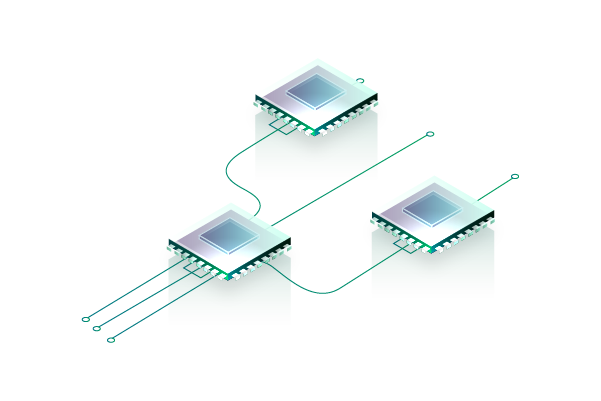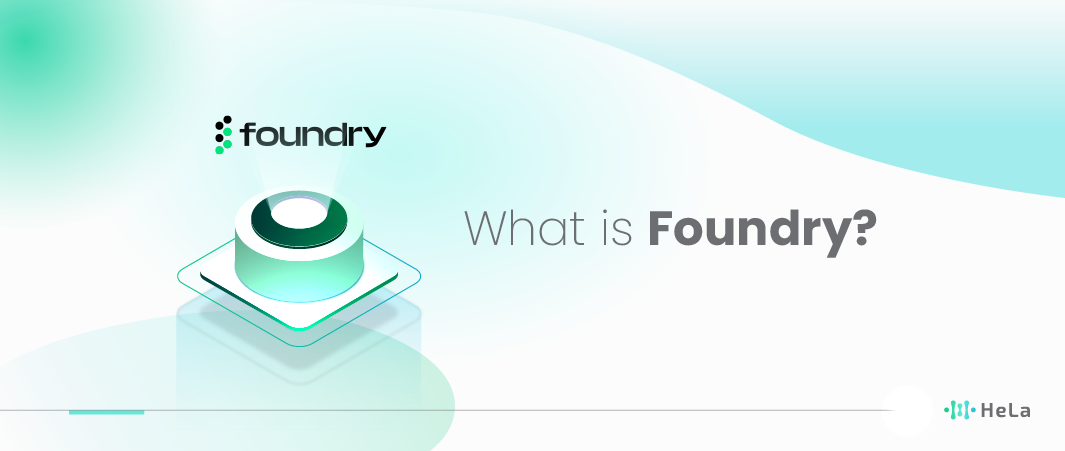In the evolving landscape of software development, Foundry has emerged as a beacon for developers seeking to streamline their workflows and enhance productivity. At its core, Foundry is a comprehensive development framework designed to facilitate the creation, testing, and deployment of software applications. Unlike traditional tools, Foundry integrates various aspects of the development process into a singular, cohesive environment, making it a one-stop solution for developers. This article aims to demystify Foundry, exploring its components, how it functions, and why it’s becoming an indispensable tool in the tech community.
Foundry’s philosophy is rooted in simplicity and efficiency, aiming to reduce the complexity often associated with software development. By offering a suite of tools and resources within a unified framework, it enables developers to focus more on solving problems and less on the intricacies of the development process. Whether you’re a seasoned developer or just starting, understanding how Foundry works can significantly impact your projects’ success.
The beauty of Foundry lies in its adaptability and versatility. It supports a wide array of programming languages and platforms, making it a versatile choice for various development projects. From web applications to complex software systems, Foundry provides the necessary tools and infrastructure to bring ideas to life efficiently. As we delve deeper into the nuances of Foundry, we’ll uncover its components, benefits, and how it seamlessly integrates into the development lifecycle.
What is Foundry?

Foundry is a comprehensive software development platform that enhances productivity and efficiency for developers by providing a suite of integrated tools. It serves as a one-stop solution for various stages of software development, including planning, coding, testing, and deployment. The core features of Foundry include:
- Integrated Development Environment (IDE): A central component that offers a unified interface for coding, allowing developers to write, edit, and manage their code in one place. This environment supports various programming languages and frameworks, making it versatile for different types of projects.
- Powerful Code Editor: The code editor within Foundry is designed to support syntax highlighting, code completion, and other features that help developers write code more efficiently. It is optimized for readability and speed, enabling quick navigation through complex codebases.
- Debugging Tools: To ensure the reliability of software, Foundry includes advanced debugging tools that help identify and fix errors within the code. These tools allow for real-time monitoring of applications, setting breakpoints, and inspecting variables to troubleshoot issues effectively.
- Version Control Capabilities: Foundry integrates version control systems, such as Git, directly within the platform. This feature enables developers to track changes, collaborate with team members, and manage different versions of their projects seamlessly.
By integrating these tools into a single platform, Foundry aims to eliminate the need for developers to switch between different applications, thus reducing complexity and saving time. It caters to the needs of both individual developers and teams, promoting collaboration and enhancing the overall software development process. Foundry’s approach emphasizes automation and simplification, with the goal of making development tasks more manageable and allowing developers to focus more on creative problem-solving and less on repetitive tasks.
Also Read: What is ERC-4907? NFT Rental Standard
The Development Frameworks within Foundry
The core strength of Foundry is encapsulated in its diverse range of development frameworks, meticulously designed to cater to varied project requirements. These frameworks serve as a foundational scaffold, enabling developers to construct their applications with enhanced efficiency and precision. Foundry’s support extends across a wide spectrum of technologies, embracing both frontend and backend development paradigms. It incorporates support for leading technologies such as React, Angular, Node.js, among others, ensuring developers have the liberty to select the most suitable tools for their projects, free from the limitations imposed by compatibility concerns.
Incorporating blockchain technology into this context adds a new layer of potential and complexity to Foundry’s capabilities. Blockchain, a decentralized ledger technology, offers unparalleled security, transparency, and efficiency in data transactions. By integrating blockchain frameworks and tools into Foundry’s already robust development ecosystem, developers can now explore and implement decentralized applications (dApps), smart contracts, and other blockchain-based solutions. This integration allows for the creation of applications that not only leverage the speed and efficiency of traditional web technologies but also embody the trustless, immutable nature of blockchain technology.
The inclusion of blockchain technology within Foundry’s frameworks empowers developers to build applications that can operate on various blockchain platforms, such as Ethereum, Binance Smart Chain, or Polkadot, to name a few. This versatility opens up a realm of possibilities for developers to innovate in sectors like finance (DeFi), supply chain, healthcare, and beyond, where blockchain’s benefits can be harnessed to solve complex problems, enhance security, and ensure greater transparency.
Moreover, Foundry’s commitment to flexibility and developer freedom is further exemplified in its blockchain integration, as it supports a variety of blockchain development tools and languages, including Solidity for Ethereum smart contracts, Substrate for Polkadot ecosystem projects, and others. This ensures that developers are not only equipped with the tools needed for traditional application development but are also well-prepared to delve into the evolving world of blockchain technology.
Foundry’s development frameworks, enriched with blockchain technology, offer a comprehensive, adaptable, and cutting-edge environment for developers. This integration not only broadens the horizon of possibilities for application development but also aligns Foundry with the future of technology, where blockchain plays a pivotal role in shaping secure, decentralized, and transparent digital solutions.
Streamlining the Workflow with Foundry
Streamlining the workflow with Foundry involves leveraging its advanced workflow automation capabilities, which are highly acclaimed within the software development industry. Foundry’s system is designed to automate numerous repetitive tasks that developers encounter daily, such as code compilation, testing, and deployment. This automation is crucial for enhancing productivity and efficiency because it minimizes the risk of human error that can occur during manual processes. By reducing these risks and saving time on routine tasks, developers are able to allocate more time and resources to focus on more critical and complex aspects of their projects, such as feature development, problem-solving, and innovation.
The automation within Foundry is powered by a comprehensive suite of predefined scripts and tools. These components are highly customizable, enabling teams to tailor the automation processes to fit the specific needs and requirements of their development cycle. Whether a project is small and straightforward or large and complex, Foundry’s automation tools can be adjusted to ensure that the workflow is optimized for efficiency and effectiveness. This level of customization ensures that every phase of the project, from conception through to deployment, is streamlined and managed with precision, leading to faster delivery times and higher quality outcomes. The ability to customize these tools means that Foundry can be seamlessly integrated into any existing development environment, making it a versatile solution for a wide range of software development projects.
Enhancing Collaboration and Version Control

Enhancing collaboration and version control is pivotal in the realm of software development, where the ability to work effectively as a team can significantly impact the success of a project. Foundry, in this context, serves as an exemplary tool designed to bolster teamwork by integrating advanced version control mechanisms. This integration is crucial for allowing multiple developers to concurrently contribute to the same project, thereby optimizing efficiency and reducing the risk of conflicts or data loss.
The version control system embedded within Foundry is engineered to streamline the collaborative process. It offers a robust platform for tracking alterations made to the codebase, enabling developers to pinpoint when changes were made and by whom. This level of traceability is essential for maintaining the integrity of the project and facilitates a more cohesive development effort. Developers can easily revert to previous states of the project if necessary, an invaluable feature when addressing issues or exploring different development pathways.
Moreover, Foundry’s version control system ensures that all team members have access to the latest version of the project. This synchronization is critical in a dynamic development environment, where changes are frequent and need to be integrated seamlessly into the ongoing work. By eliminating discrepancies between different versions of the project, Foundry helps in maintaining a single, unified direction for the development team, thus enhancing overall productivity and reducing the time to market for the software being developed.
Foundry’s emphasis on enhancing collaboration and version control reflects a deep understanding of the challenges faced in software development. By providing a platform that supports seamless teamwork and efficient version management, Foundry not only mitigates the risks associated with collaborative development but also empowers teams to achieve their goals with greater speed and efficiency.
Foundry’s Role in Testing and Quality Assurance

In the intricate landscape of software development, the emphasis on testing and quality assurance cannot be overstated. Foundry emerges as a linchpin in this context, offering a comprehensive suite of tools that streamline and enhance the testing and debugging processes. These tools are meticulously integrated within Foundry’s ecosystem, facilitating a seamless integration of rigorous testing protocols into the software development workflow. Here’s an expanded look into how Foundry’s testing frameworks cater to various testing methodologies:
Unit Testing
At the core of Foundry’s testing capabilities is its support for unit testing. This method allows developers to scrutinize individual units of code—be it functions, methods, or classes—in isolation from the rest of the application. The primary objective here is to verify the correctness of each unit, ensuring that it behaves as intended. Unit testing is pivotal for several reasons.
Firstly, it allows for the early detection of bugs at the granular level, making it easier to pinpoint and rectify errors. Secondly, it facilitates the documentation of the codebase, as each test case effectively describes the expected behavior of the unit under test. Moreover, unit testing promotes a modular approach to software development, where each piece of the code can be developed and tested independently, enhancing code reusability and maintainability.
Integration Testing
Building upon the foundation laid by unit testing, integration testing takes a broader view by focusing on the interactions between integrated units of code. This testing phase is crucial for uncovering issues that might not be visible at the unit level, such as data format discrepancies, interface mismatches, and other integration-specific defects.
Integration testing ensures that different components of the application work together harmoniously, facilitating a cohesive and functional software system. It also plays a critical role in verifying the integrity of data flow across modules and the system’s ability to handle dependencies effectively.
End-to-End Testing
Foundry’s support extends to encompass end-to-end testing, an exhaustive approach that evaluates the application’s functionality and performance in an environment that closely simulates real-world usage scenarios. This method tests the application from start to finish, validating the integrated system’s behavior against the defined requirements and specifications. End-to-end testing is invaluable for several reasons.
It offers a comprehensive assessment of the system’s overall performance and reliability, ensuring that the software meets user expectations in terms of functionality, usability, and security. Furthermore, it helps identify issues related to external dependencies, third-party services, databases, and networks, providing a holistic view of the software’s operational readiness.
By covering all these testing methodologies, Foundry enables developers to identify and rectify issues early in the development cycle. This proactive approach to quality assurance is vital for several reasons:
Early Detection of Bugs
The early identification and resolution of defects are among the most significant advantages offered by Foundry’s testing tools. By catching bugs in the initial stages of development, teams can avoid the exorbitant costs and delays associated with fixing issues later in the cycle. Early detection also minimizes the risk of introducing new bugs when making late-stage modifications.
Stability
A software application’s stability is paramount to its success. Through comprehensive testing, Foundry ensures that each component and their interactions are thoroughly vetted, leading to a robust and stable final product. Stability is not just about preventing crashes; it’s about delivering consistent, reliable performance under a variety of conditions, which in turn fosters user trust and satisfaction.
Efficiency
Foundry’s testing tools are designed with efficiency in mind. Automation of testing processes not only accelerates the testing phase but also ensures consistency and repeatability of tests. This automation is crucial for maintaining high testing standards across different stages of development and across multiple projects, ultimately leading to more efficient use of resources and faster time-to-market.
Also Read: 10 Key Features of Web 3.0 Technology That You Need to Know
Quality
The overarching goal of Foundry’s testing and quality assurance tools is to elevate the quality of the final product. Quality in this context encompasses not just the absence of bugs, but also performance, usability, and adherence to user requirements. High-quality software is more likely to meet or exceed user expectations, leading to higher satisfaction, increased loyalty, and a stronger competitive edge.
Foundry’s role in testing and quality assurance is integral to the development of software that is not just functional, but also dependable, user-friendly, and aligned with the highest standards of quality. By embedding these testing protocols into the development lifecycle, Foundry empowers development teams to deliver superior products confidently, ensuring a positive impact on user experience and overall business success.
Conclusion
Foundry represents a significant leap forward in software development, offering a comprehensive, efficient, and flexible framework that caters to developers’ diverse needs. Its integrated tools and automation capabilities streamline the development process, allowing for more focus on innovation and problem-solving. The collaboration and version control features foster a collaborative environment, enhancing productivity and reducing the risk of errors.
The adaptability of Foundry’s development frameworks ensures that it remains a valuable tool for projects of all sizes and complexities. Whether you’re working on a small personal project or a large-scale enterprise application, Foundry provides the tools and resources necessary to bring your vision to life. Its emphasis on automation, collaboration, and quality assurance makes it a standout choice for developers looking to enhance their workflow and produce high-quality software.
As the tech landscape continues to evolve, Foundry’s role in shaping the future of software development cannot be overstated. Its comprehensive approach to development, combined with its ease of use and versatility, makes it an indispensable tool for developers worldwide. By embracing Foundry, developers can navigate the complexities of software development with greater ease and confidence, paving the way for innovative solutions that push the boundaries of what technology can achieve.
Disclaimer: The information provided by HeLa Labs in this article is intended for general informational purposes and does not reflect the company’s opinion. It is not intended as investment advice or recommendations. Readers are strongly advised to conduct their own through research and consult with a qualified financial advisor before making any financial decisions.

Joshua Soriano
I am a writer specializing in decentralized systems, digital assets, and Web3 innovation. I develop research-driven explainers, case studies, and thought leadership that connect blockchain infrastructure, smart contract design, and tokenization models to real-world outcomes.
My work focuses on translating complex technical concepts into clear, actionable narratives for builders, businesses, and investors, highlighting transparency, security, and operational efficiency. Each piece blends primary-source research, protocol documentation, and practitioner insights to surface what matters for adoption and risk reduction, helping teams make informed decisions with precise, accessible content.
- Joshua Soriano#molongui-disabled-link
- Joshua Soriano#molongui-disabled-link
- Joshua Soriano#molongui-disabled-link
- Joshua Soriano#molongui-disabled-link

